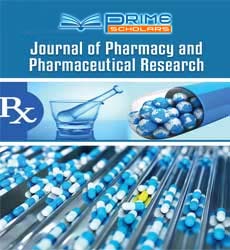Short Communication - (2023) Volume 7, Issue 1
A Short Note on Assessment and Management of Pediatric Asthma
Emir Linn*
Department of Pharmaceutics, University of Melbourne, Australia
*Correspondence:
Emir Linn,
Department of Pharmaceutics, University of Melbourne,
Australia,
Email:
Received: 01-Mar-2023, Manuscript No. IPIPR-23-16164 ;
Editor assigned: 03-Mar-2023, Pre QC No. IPIPR-23-16164 (PQ);
Reviewed: 17-Mar-2023, QC No. IPIPR-23-16164 ;
Revised: 22-Mar-2023, Manuscript No. IPIPR-23-16164 (R);
Published:
29-Mar-2023, DOI: 10.21767/IPIPR.23.7.010
Introduction
Pediatric asthma remains a major unmet clinical need, and precision
medicine approaches are still lacking in clinical practice. Given
the underlying inflammatory profile, there is an urgent need
to tailor asthma management to the individual patient and move
from a one size fits all approach to a much-needed individualized
approach, provides new treatment guidelines. E-health and home
monitoring technologies have provided more insight into disease
dynamics and helped improve adherence to treatment, while
improving patient care delivery [1]. The presence of airway wall inflammation
is an important pathophysiological mechanism, and
although activated immune cells and their mediators are found in
the airways of asthmatics, different patterns of inflammation have
been recognized.
Description
A common sub-classification is based on presence or absence of
type 2 inflammation in the blood and/or airways. The type 2 inflammatory
pattern appears to be most common in childhood asthma
and is characterized by type 2 mediators produced and/or Innate
Lymphoid Cells (ILC). This may lead to infiltration of activated eosinophils.
In contrast, inflammatory type 2 asthma is characterized
by a lack of type 2 inflammatory mediators or airway eosinophils.
Asthma is a heterogeneous inflammatory disease of the airways
that can have a significant impact on the quality of life of patients
and families [2]. The disease is characterized by variable airflow limitation
and airway hyper reactivity. Reversible airway obstruction
is the most common feature of asthma. In children with asthma,
additional pathological mechanisms may be involved, including airway
remodeling due to airway smooth muscle hyperplasia, and excessive
collagen deposition in sub-epithelial and foveal cell metaplasia.
The exact relationship between airway inflammation and
airway remodeling remains unclear. Although airway inflammation
is thought to drive airway remodeling, these structural changes may also occur by other processes. Reducing airway inflammation
and preventing airway remodeling are both important therapeutic
goals, as these structural changes lead to irreversible loss of lung
function.
Inflammatory biomarkers are of particular importance as novel targeted
therapies are approved to treat severe asthma. For example,
biologics such as mepolizumab and omalizumab specifically target
type 2-mediated inflammatory pathways and may be activated differently
in different patients [3]. However, in pediatric asthma, it may
be difficult to obtain a sputum sample in children, and it may be difficult
to perform a venipuncture to draw blood, making it difficult
to identify the underlying inflammatory condition. Furthermore,
the inflammatory phenotype based on sputum samples does not
appear to be stable in children compared to adults [4]. Exercise interventions
can improve lung function, reduce symptoms, and improve
quality of life in children with asthma.
Conclusion
Additionally, the available literature on asthma prevention and
treatment recommends increasing fruit and vegetable intake.
However, uncontrolled pediatric asthma remains a major unmet
clinical need, and precision medicine approaches are still lacking in
clinical practice. Most studies focus on adults. However, molecular
pathways, clinical efficacy, biomarkers, and predictors of biological
response appear to be age-dependent, making it difficult to extrapolate
adult results to pediatric populations. Assess pediatric asthma
management and discover precision medicine to properly diagnose
and phenotype children with asthma, improve patient drug
response and adherence, and select optimal treatments for best
outcomes, further research is needed to identify new biomarkers.
Acknowledgement
The author is grateful to the journal editor and the anonymous reviewers
for their helpful comments and suggestions.
Conflict of Interest
The author declared no potential conflicts of interest for the research,
authorship, and/or publication of this article.
References
- Teague WG (2020) Pediatric severe asthma in the era of biologic treatments. Pediatr Allergy Immunol Pulmonol 33(3):118-120.
[Crossref] [Google Scholar] [Pubmed]
- Eigenmann P (2020) Improving asthma care in preschool children. Pediatr Allergy Immunol 31(6):597-600.
[Crossref] [Google Scholar] [Pubmed]
- Lang JE (2019) Obesity and childhood asthma. Curr Opin Pulm Med 25(1):34-43.
[Crossref] [Google Scholar] [Pubmed]
- Busse WW (2023) Consequences of severe asthma exacerbations. Curr Opin Allergy Clin Immunol 23(1):44-50.
[Crossref] [Google Scholar] [Pubmed]
Citation: Linn E (2023) A Short Note on Assessment and Management of Pediatric Asthma. J Pharm Pharm Res. 7:010.
Copyright: © 2023 Linn E. This is an open-access article distributed under the terms of the Creative Commons Attribution License,which permits unrestricted use, distribution, and reproduction in any medium, provided the original author and source are credited.

